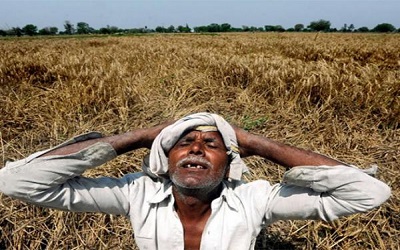The topic of how Indian peasants cannnot afford seeds is popular among PTE candidates. 今天墨尔本悉尼文波PTE培训学校就给墨尔本PTE和悉尼PTE的考生们找到了这道题的真题来源而且附上了文本,希望对你们有用。下面开始:
背景 questions:
- How does the farmer get money to buy cotton seed?
- Why is the farmer’s profit declining and what expenses must the farmer pay?
- How has free market trading made it harder for Vidarbha’s farmers to realize a profit?
墨尔本悉尼文波PTE培训学校温馨提示本篇SST后的transcript:
The high cost of borrowing money coupled with low prices for cotton in a globalized market leave the farmers of Vidarbha with very little profit.
NARRATOR
Hanjari Chavan can remember farming with his grandfather when they didn’t need to buy seeds.
HANJARI CHAVAN
In those days the seed was home-grown, you had to just till and sow, and the entire income from the crop was yours.
NARRATOR
Planting season for Chavan begins with figuring out how to pay for his seeds. So he’s come to the government-run bank.
BANK MANAGER
How much do you want now?
HANJARI CHAVAN
About $3,700.
BANK MANAGER
Let’s see what we can do.
HANJARI CHAVAN
At least make it a little more so that it will be enough.
BANK MANAGER
We can do about $2,500.
HANJARI CHAVAN
Only $2,500? At least make it $500 more.
BANK MANAGER
All right, we’ll do it.
HANJARI CHAVAN
$1,250 goes for the seeds, 600 for the fertilizer, about 250 goes to pay the laborers to sow and till. We also use pesticide spray. The money’s not enough for this.
NARRATOR
About half of Chavan’s bank loan will have to pay for Bt cotton seeds. He’s more fortunate than many of his neighbors because part of his farm is irrigated.
SEED STORE OWNER
20 percent of this area is irrigated. 80 percent is not. Even those who don’t have irrigation demand Bt. I advise them not to buy, but they don’t listen and they plant Bt anyway.
HANJARI CHAVAN
Last year we used Bt and we liked it. So we’ll use it this year also and see how it does.
NARRATOR
Last year after all his expenses Chavan says his income was about 1,200 dollars, which had to provide for an extended family of thirteen. This meagre income he blames on steadily declining cotton prices.
NARRATOR
The price Chavan got for his cotton at last season’s market was down 25 percent from the year before, even as seeds, fertilizer and pesticide went up. The government safety net that once kept cotton prices closer to the cost of production – has all but disappeared.
背景Essay:
A number of factors have hurt profit margins for farmers in India. These include steadily declining cotton prices; the costs of farm needs such as seeds, fertilizers, pesticides, and labor; and the fact that the government safety net that once kept cotton prices closer to the cost of production has all but disappeared.
For better or worse, the 21st century has given rise to an international form of trade known as globalization. Globalization can be defined as the worldwide integration of economic, cultural, political, religious, and social systems. The term, associated with free trade practices believed by many to benefit large multinational corporations at the expense of small farmers in developing nations, ignites controversy at its very mention. Its impact can be felt far beyond the economic sector and cannot be easily assessed.
Proponents of globalization believe it expands economic freedom and encourages competition. They believe that globalization raises the productivity and living standards of people in countries that open themselves to the global marketplace. Among those living in less developed countries, globalization offers access to foreign money, an opportunity to trade in global markets, and access to the benefits of modern technology. Globalization’s strongest supporters suggest that a globalized world will result in the reduction of poverty, higher standards of living and greater democracy.
Opponents of globalization dispute these claims, aruging that the disparity between haves and have-nots has become more acute and that the environmental damage being caused by many corporations is irreparable. These critics feel that citizens of the developing world have suffered at the hands of globalization, that they have been seduced by Western consumerism, and exploited by international institutions intent on increasing profits at the expense of the domestic laborer.
Nowhere can this conflict be seen more clearly than among the cotton farmers of Vidarbha, India. As recently as July 2007, Reuters reported that farmers from the wealthy state of Maharashtra have been committing suicide at an alarming rate. Tempted by the promise of prosperity, farmers borrow money to purchase a controversial, genetically modified cotton seed.
The expensive seed requires ample water sources that are unavailable to most Indian farmers. The rising cost of chemical fertilizers and the plummeting price of cotton contribute to the economic plight of the farmers in this region. Distraught and desperate, indebted farmers have taken their lives rather than face the consequences of financial ruin.
THE DYING FIELDS provides a glimpse into the shattered lives of families who have endured these suicides, and encourages its audience to examine the impact of globalization on the region. Critics of free trade policies, lack of government subsidies, and failed government relief efforts share their concern for the fate of Vidarbha’s farmers
文波陪伴,英语不难
文波陪伴,PTE不难
文波PTE论坛,最专业的PTE论坛
wenbo.tv 看PTE真题视频的地方





